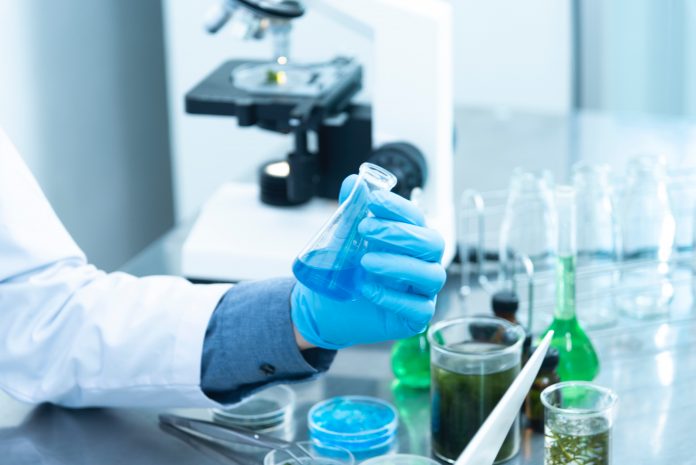What we know about endocrine disruptor chemicals
Endocrine disruptors are chemicals present in many everyday products, including food. They can mimic hormones and alter their activity, leading to several biological effects. We know these chemicals cause harmful effects on animals, but we don’t know much about their effects on humans.1
Understanding the basics
The endocrine system controls a wide array of bodily functions by producing hormones. For example, the pancreas creates hormones that regulate digestion and blood sugar. Another example is the hormones the adrenal gland creates, which regulate metabolism and blood pressure. Additional functions that hormones regulate include mood, sleep, and reproduction.2 Endocrine disruptor chemicals can alter the amounts of hormones in the body, which in turn either increases or decreases the activity of those hormones.
Next, they can act like hormones by mimicking their effects. Finally, they can change the amounts of hormones that the body produces, either increasing or decreasing hormone activity. Either of these effects can cause all kinds of chaos in the body.1
Sources of endocrine disruptors
Endocrine disruptors are found in lots of objects, including:
- plastics,
- electrical equipment,
- cosmetics,
- medical devices,
- pesticides,
- food (yes, even food).1
Thus, people can come into contact with endocrine disruptor chemicals through direct contact, respiration, or ingestion.1
Endocrine disruptor list
A list of common endocrine disruptors has been provided by the National Institute of Environmental Health Sciences (NIEHS).1 Some are natural-occurring, and others are synthetic.
This article will review the following endocrine disruptors in further detail:
- bisphenol A (BPA),
- dioxins,
- and perfluoroalkyl and polyfluoroalkyl substances (PFAS).1
Bisphenol A
Bisphenol A (BPA) is a chemical found in different plastics, including water bottles and the coating used in canned foods.
Most of the time, people inadvertently consume this chemical through contaminated food and water. This happens because BPA leaches into the products from the container. BPA has also been detected in breast milk.3 The Centers for Disease Control and Prevention (CDC) conducted the National Health and Nutrition Examination Survey (NHANES III) during 2003-2004.4
They collected 2517 urine samples from people who were six years old and up. Shockingly, they detected BPA in 93% of those samples.3 BPA has been shown to affect fetuses and babies in animal studies and may have the most profound effects in younger children. The good news is, we can minimize our exposure to BPA by
- avoiding microwaving food in anything containing polycarbonate plastic (these are any containers with a recycling code of 3 or 7),
- avoiding storing hot food or beverages in plastic containers,
- limiting the consumption of canned foods,
- feeding infants using bottles that do not contain BPA.3
Dioxins
Dioxins are released into the air during waste incineration processes, forest fires, and volcanic eruptions. Dioxin production has been reduced by 90% since 1987 thanks to strict regulations. While progress has been made in reducing dioxin emissions, they are still a cause for concern. Since dioxins take a while to break down, those that were emitted years ago still affect us today.5 Exposure occurs primarily by eating contaminated animal products. Once consumed, dioxin becomes absorbed by fatty tissue.5
Research has shown that dioxins interfere with how our genes operate, which can lead to various effects. Dioxins are known to cause cancer and have also been associated with other diseases. Type 2 diabetes, heart disease, developmental problems in children, and infertility are some conditions associated with dioxin exposure.
Perfluoroalkyl and polyfluoroalkyl substances (PFAS)
PFAS are man-made chemicals found in everyday items worldwide, including carpets, clothing, cooking equipment, and food packaging. PFAS can leak into the environment and, like dioxins, are quite resistant to degradation. People become exposed to PFAS through contaminated food and water, direct contact, and respiration.6
Since there are over 9,000 known PFAS, a lot of work is needed to understand how they affect us. Nonetheless, the NIEHS is working hard to determine how they affect human health and funding research aimed at controlling exposure to PFAS. So far, the NIEHS has found that PFAS can affect metabolism, fertility, fetal growth, and weight. PFAS can also weaken the immune system and increase the risk of developing cancer.6
Where do we go from here?
So far, current evidence suggests that exposure to endocrine disruptor chemicals negatively affects our health. Researchers are working hard to understand further how this happens and develop ways to minimize our exposure. In the meantime, we can educate ourselves and use products that do not contain endocrine disruptors.
References
1. Endocrine disruptors. National Institute of Environmental Health Sciences. March 8, 2023. Accessed March 30, 2023. https://www.niehs.nih.gov/health/topics/agents/endocrine/index.cfm.
2. Anatomy of the endocrine system. Johns Hopkins Medicine. November 19, 2019. Accessed March 30, 2023. https://www.hopkinsmedicine.org/health/wellness-and-prevention/anatomy-of-the-endocrine-system.
3. Bisphenol A (BPA). National Institute of Environmental Health Sciences. January 17, 2023. Accessed March 30, 2023. https://www.niehs.nih.gov/health/topics/agents/sya-bpa/index.cfm.
4. Nhanes questionnaires, datasets, and related documentation. Centers for Disease Control and Prevention. https://wwwn.cdc.gov/nchs/nhanes/continuousnhanes/default.aspx?BeginYear=2003.
5. Dioxins. National Institute of Environmental Health Sciences. November 22, 2022. Accessed April 1, 2023. https://www.niehs.nih.gov/health/topics/agents/dioxins/index.cfm.
6. Perfluoroalkyl and Polyfluoroalkyl Substances (PFAS). National Institute of Environmental Health Sciences. March 9, 2023. Accessed April 1, 2023. https://www.niehs.nih.gov/health/topics/agents/pfc/index.cfm.



